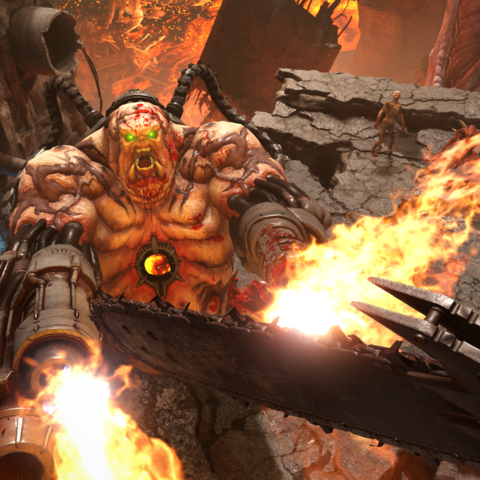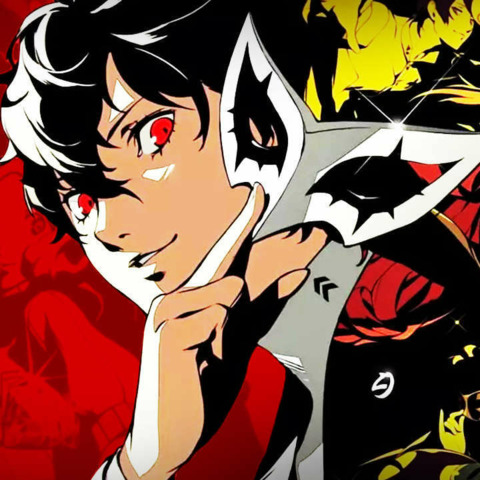Every year at GameSpot, we give a variety of awards to the best games that came out. Aside from our top 10 list, category awards, and overall pick for Game of the Year 2020, we also wax about our favorite games and moments. We've already published our Editor's Spotlight Awards, which features our team's favorite games that didn't make it into our main awards. But we also have our Editor's Highlight Awards, a roundup detailing our favorite moments, game mechanics, and cultural events in the world of gaming this past year.
These highlights encompass a wide range of things that we loved experiencing in games in 2020, whether it was Ghost of Tsushima's outstanding Guiding Wind mechanic or the first time we celebrated a villager's birthday in Animal Crossing: New Horizons. This year may have been tumultuous due to the unprecedented impact of the COVID-19 pandemic. Still, it was also one packed with some outstanding moments in games and the joyous community surrounding it.
As a note, there are potential spoilers around the games we've discussed below, so be wary as you read through our various highlights. But what were your biggest highlights in games this past year? Let us know in the comments below!
For more end-of-the-year content, check out our Best Of 2020 hub. If you're more curious about next year, check our Most Anticipated of 2021 hub, which contains features detailing the biggest games to play next year.
Animal Crossing: New Horizons | Villager Birthday Parties

Animal Crossing: New Horizons is a game filled with joy, so if you're looking for something to cheer you up in this miserable year, you don't have to look far while playing. But for my money, there's nothing in the game more wholesome than birthday parties.
I'm not even talking about the party to celebrate your own birthday), but instead those of your villagers. An announcement will be posted to the in-game bulletin board with the date of any upcoming birthdays to give you time to get a gift and ensure you play that day--and nothing but a one-day seasonal event is more likely to guarantee that I boot up Animal Crossing.
Wander into the house of whoever is celebrating their birthday, and you'll be treated to as delightful of a sight as the game can muster. Cheerful, uplifting music plays as the birthday person--wearing a birthday cake hat--whistles and dances around the room with a friend. There aren't any activities tied to this (other than handing over a gift), yet I always feel compelled to spend at least a few minutes visiting. I'm delighted any time I see one of my villagers visiting another, but get them celebrating a birthday, and it makes me want to cry every time. It's just so sweet and innocent, and it really cuts to the heart of what makes Animal Crossing so special. -- Chris Pereira, Senior Editor / Global Head of News
Ikenfell | Facing Gilda And Hearing "It's Showtime!"
Ikenfell is really good for many reasons--it's got an incredibly diverse cast of characters and challenging yet fun turn-based combat that utilizes a clever timing mechanic, and it tells a well-written story. But my favorite part of Ikenfell is the soundtrack, specifically the unique themes that play during certain boss battles.
I still remember the first time I went up against Gilda, a young witch who has a major crush on protagonist Maritte and keeps challenging her to duels to prove her strength. Up to that point, every fight just features traditional battle themes that you'd expect in any RPG. But as the music ramps up in your first fight against Gilda, suddenly a voice begins to sing.
The moment comes out of nowhere, which just makes it that more awesome! "It's Showtime!" is one of the best songs in Ikenfell, ramping up a rather typical battle against your traditional "RPG rival" into an epic showdown. The song provides insight into Gilda's mindset as well, almost as if she's the one singing as she initially trumps you, and you're trying to get the hang of the swift timing of her lightning-based attacks. The fact that "It's Showtime!" has a slightly faster rhythm than the battle theme you've encountered prior only adds to how cool a moment it is--it's like the game is letting you know ahead of time that you'll need to react a lot faster to block Gilda's attacks.
Ikenfell repeats this pattern a few more times throughout its campaign. My personal favorite is "Paint the Future" (which is an incredible moment in the game, my goodness), but no musical moment in Ikenfell quite matches the first time you hear "It's Showtime!" and realize that this RPG is going to use its soundtrack to surprise you in the most delightful of ways. -- Jordan Ramée, Associate Editor
PlayStation 5 | Screen Share The Love
There's a lot to love about the PlayStation 5, but the unsung hero for me is the screen share option. We live in an age where, for many of us, playing games with friends is the primary form of social interaction. It's what has carried us through the days, weeks, and months of the COVID isolation. But sometimes, the company is more valuable than actual cooperation. Sometimes you just want to play different things and chat.
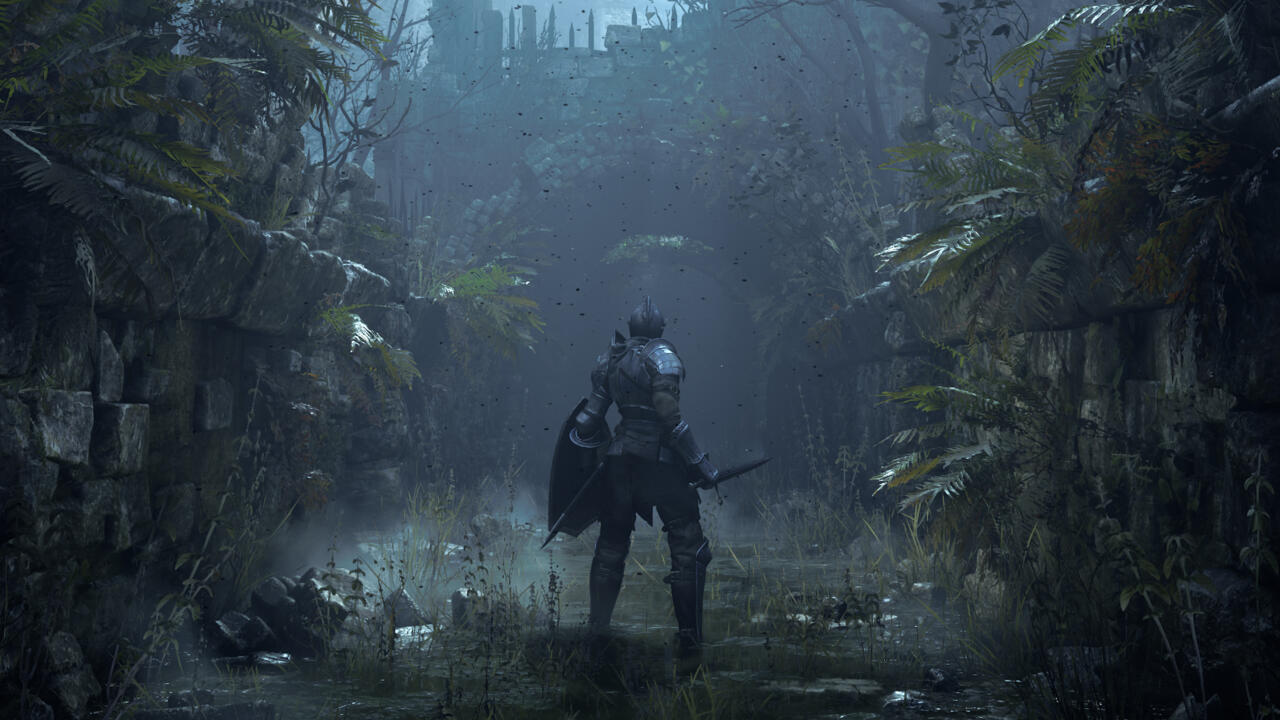
The PS5's screen share has been revelatory in that. Much of my early time with the console was spent slowly and methodically making my way through Demon's Souls, a game that many of my friends were playing for the first time. Souls games are challenging for even the most seasoned genre veterans, but they can feel particularly obtuse for newcomers. So, the ability to have a friend's gameplay appear on screen while I was also playing to keep an eye on them and guide them when necessary was legitimately a game-changer.
I spent a whole lot of time grinding for Souls in the Shrine of Storms. The monotony of running from an archstone, through a hallway to fire arrows at an unsuspecting enemy, then repeating until my virtual pockets were bulging from the hundreds of thousands of souls was completely erased when I could also watch a friend play the game for the first time.
Sure, this is quite a specific application of the feature, but it was just as enjoyable to watch someone hop around in Astro's Playroom and marvel at the heartwarming homages to PlayStation history. Or watch them swing through the skies as Miles Morales for the first time and hear the sheer thrill in their voice as it happened. Screen share is a microcosm of why we love watching people on Twitch and YouTube; we get to share in the joy of gaming together. -- Tamoor Hussain, Managing Editor
Final Fantasy VII Remake | Midgar, Realized
Like many, I played and was enthralled by Final Fantasy VII when it was initially released in 1997. I specifically remember feeling like Midgar was just the prologue I had to get through to experience the real game. It was that critical story moment that set up the rest of the game that I just had to get through to explore the world map finally--and spend countless hours trying to raise a golden Chocobo.

So when I first heard that the Final Fantasy VII Remake was being cut up into parts, I wasn't exactly enthralled by the idea, especially since the first installment would be Midgar only. However, after playing the game, I can confidently say that this was the exact way to do it. The remake truly brought Midgar to life and made the city feel vibrant and real. Each of the various slums you visit feels like an area where a downtrodden community lives. And the fact that the remake has you visit one of the more middle-class areas of the top plate greatly impacts your view of the contrast between the wealthy and poor.
Furthermore, the game added background and fleshed out your fellow freedom fighters of Jessie, Biggs, and Wedge. While in the original game, they felt like disposable side characters, this time around, I genuinely wanted to see them succeed, as they finally had personality. Thanks to the Remake, I fell in love with the city of Midgar and loved seeing it realized with care and detail. -- Dave Klein, Video Producer
Ghost of Tsushima | The Guiding Wind Mechanic
Open-world games have struggled with "the map problem" since their inception. We took our characters off of their rails, unshackled them from all the problematic predictability of a linear story, only to saddle them with a constellation of icons strewn across a world map representing less of an exciting menu of options and more of a to-do list to be slogged through.
Sure, methodically clearing icons from one map sector after another might scratch the itch of completionist nerds (like me), but many others find the design to be overused or, worse: a chore. That's not to mention that the very act of opening a map inevitably breaks the player's immersion in the game world. Now, I know what you're thinking, and yes, Ghost of Tsushima does have a map littered with icons of narrative missions, side quests, and collectibles, but that's exactly what makes the Guiding Wind mechanic so ingenious.

If you've read anything about Ghost of Tsushima this year, you've probably heard that it features one of the most beautiful game environments ever created. Jin Sakai stands on cliffs overlooking the sea bathed in the blood-red glow of a setting sun, rides his horse through whispering pampas grass in silvery moonlight, or fights duels in clearings surrounded by explosions of golden foliage. If any game world is begging for as few interruptions to the experience as possible, it's this one.
Guiding Wind lets you briefly choose an icon from your map screen, then close it and forget it. To remind yourself which direction you're headed, simply use the touchpad to prompt the wind to gust in the direction of your objective. No more constantly checking your character's icon to see if the arrow is pointed the right way, no more splitting your focus to consult a mini-map, no more weird illusion-ruining waypoints fixed on the horizon. Guiding Wind weaves all this right into the fabric of the gameplay itself, letting you spend more time as Jin Sakai: legendary samurai and scourge of the Mongol horde, and less time as Eric Sams: guy sitting on his couch with pretzel crumbs on his sweatshirt trying to figure out how the hell he took a wrong turn on his way to the Golden Temple. -- Eric Sams, Social Media Manager
Astro's Playroom | The DualSense's "Wow" Moment
It's not uncommon for console makers to talk up the benefits of their latest innovations, so I applied a fair amount of skepticism to Sony's boasts about the DualSense controller. As it turns out, the company wasn't actually exaggerating. This controller is a real game-changer, and it only took the free preloaded game Astro's Playroom to convince me.

Whether it's feeling the texture of a platforming surface represented with the ultra-fine haptics or squeezing down the satisfying click of the adaptive triggers, Astro's Playroom was a perfect showpiece for the PS5. The best platformers take a series of simple mechanics and show a wide variety of applications. The game not only managed to do that for the platforming mechanics themselves but also the DualSense. The harmony of these two elements makes a lovely little surprise of a game, with plenty of respectful and playful homage paid to PlayStation's history. I've always thought of constant delightful surprises and refined platforming as Nintendo's undisputed arena, but Astro's Playroom gave some of the best recent Mario games a run for their money. -- Steve Watts, Associate Editor
The Last Of Us Part II | The Space Shuttle Moment
The Last of Us Part II is both a triumph over the Uncanny Valley and a harrowing lesson about the experiences that lie on the other side of it. The most striking narrative technique in Neil Druckmann and Halley Gross's bleak epic are the passages when they keep dialogue sparse and instead allow their actors' physical performances to convey the emotion of a moment.
Druckmann can choose to, say, fix his camera in closeup on Ellie's face during a moment of shock or anger, knowing that all the intensity and nuance of Ashley Johnson's performance will translate through the screen to the player with near-perfect fidelity. Combined with TLoU2's other sensory inputs (i.e. its plangent score, its desolate environments) these scenes can be not just affecting but utterly goddamn devastating, and the writers and visual artists at Naughty Dog have proven merciless in their willingness to inflict such bruising imagery on their fans. I admit that contemplating the future uses to which this rapidly evolving toolkit might be put fills me with both awe and dread. What lurid nightmares and photoreal depictions of trauma await us in The Last of Us Part III?

That's why it's so impactful when Druckman employs the talent of his cast and the miraculous tools at his disposal to deliver moments of uplift amid the otherwise unrelenting chaos. The predecessor to the Space Shuttle moment, the Giraffe moment, cemented TLoU's place as a modern classic, just as capable of communicating delicacy as it was brutality. The Space Shuttle moment provides an equally gorgeous grace note. Joel contrives to gift Ellie the simulated experience of a real-life space shuttle launch amid the ruins of an abandoned NASA museum exhibit. Like the giraffe encounter, the Space Shuttle moment is bursting at the seams with humanity. As she allows herself to be transported by the fantasy of her lunar launch, Ellie's face is a kaleidoscope of emotion--from skepticism to affection to excitement to serenity.
Surrounded by the literal apocalypse, Joel finds a way to make Ellie feel safe, and that makes us feel safe. The Space Shuttle moment is a counterweight to the burden of the horror the rest of the game asks us to bear. Inside that lunar lander are Ellie and Joel at the absolute heart of what makes this series so special, sharing a bond so hard-won and so deeply felt that both of them would, and do, fight to the death for it. -- Eric Sams, Social Media Manager
Ori and the Will of the Wisps | The Ending
Moon Studios quickly made a name for itself with expert platforming chops and the ability to invoke deep emotions with a combination of beautiful animation and stirring music in Ori and the Blind Forest. In Ori and the Will of the Wisps, the studio told a story that was more somber, but no less affecting, in part by subverting the expectations set by Blind Forest.
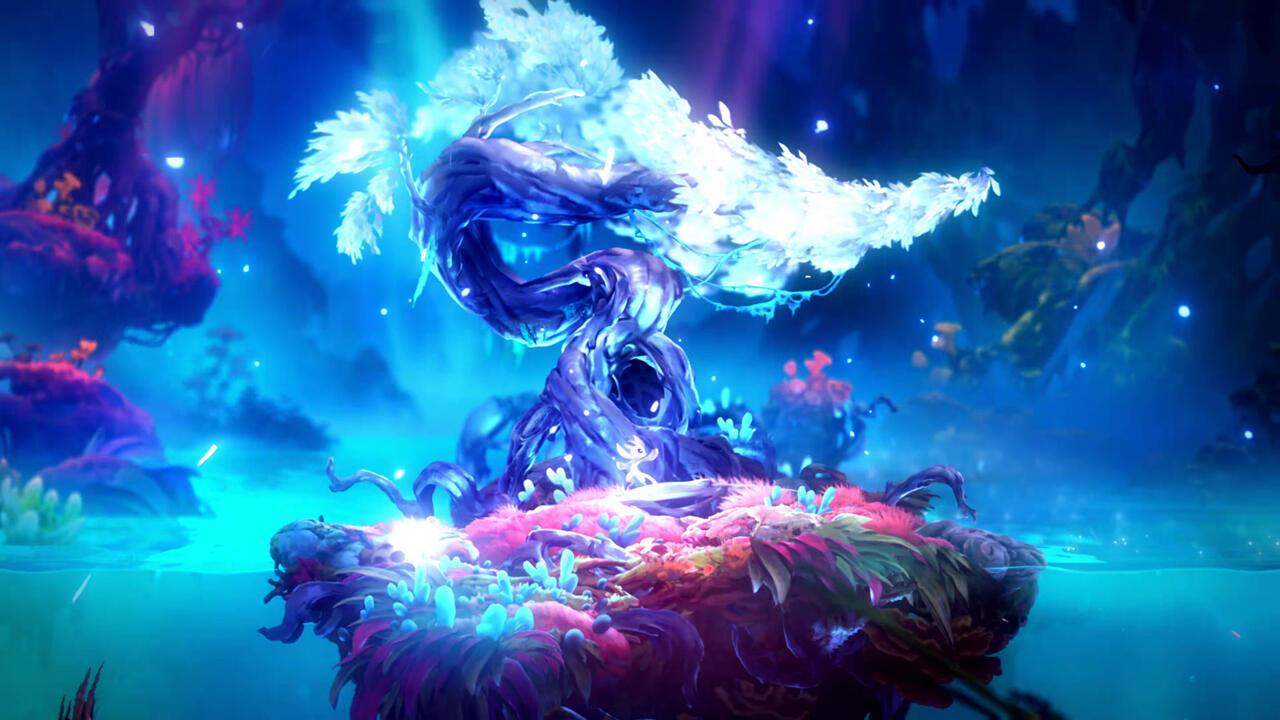
In Blind Forest, the villain Kuro became a sympathetic antihero. It was a redemption story that helped illustrate the intimacy and universality of parenthood. When the studio introduced a new villain--another brooding owl, no less--we may have thought we knew where it was going. But Shriek is not Kuro, and sometimes a person is too wounded to find their way back. Instead of a grieving mother, we saw a hurt child, and a haunting ending for one of the year's best antagonists.
In stark contrast to Shriek's conclusion was Ori's, who closes the loop on this branch of the series by fulfilling his or her destiny. The ultimate conclusion is both unexpected and, once it happens, the only way it could possibly have ended. -- Steve Watts, Associate Editor
Devil May Cry V Special Edition | Vergil's Battle Theme "Bury The Light"
After hearing that Capcom was officially done developing post-launch content for Devil May Cry 5, my hopes for a Special Edition-like DLC for the game dissipated. But during one of Sony's PS5 presentations earlier this year, I was shocked and thrilled to see that a standalone Special Edition was being made. Better yet, this new version of the game would be adding Vergil--the series' iconic brooding boy, twin brother of Dante, and Nero's absentee father. But what really got me most excited from the announcement for me was Vergil's battle theme, "Bury The Light."
A little background: Since the first Devil May Cry game, the series has cultivated a reputation for its energetic battle music. However, it arguably set a new standard with Devil May Cry 5 in Nero's pulse-pounding theme, "Devil Trigger," which effectively brought excitement around the once long-dormant series to a fever pitch after the sequel's debut trailer at E3 2018. And understandably so--the theme, composed by Casey Edwards with vocals from his wife Ali Edwards, helped modernize the series' reputation for being slick and stylish. But "Devil Trigger" resonated with me and countless others on a higher level, clearly signified by the millions of listens the song received and still gets on Spotify and YouTube. So with all that, my expectations for a new character's battle theme were unquestionably high.
And after listening to it nearly a thousand times now, I can honestly say that "Bury the Light" slaps like no other. Composed again by Edwards, the song's metal stylings are hard-hitting, like Dante's theme "Subhuman" from DMC 5, but it possesses an emotional core that makes it far more gripping. Because of that, I can't help but weep like the colossal nerd that I am whenever I hear it. Vergil always did have a more compelling arc compared to other characters in DMC. He struggles with the complicated history of his lineage, pursuing the power of his demonic side to bury his weakness--to be rid of his humanity so he can no longer be vulnerable to the pain of abandonment caused by his parents' death. Amid all the edgy vocal delivery from metal singer Victor Borba are lyrics that pertain to Vergil's story, referencing events and taking words from dialogue in older games. Its sound is hot-blooded and aggressive, but it's also tragic and grieved. You always get a sense of Vergil's plight when you hear it, even if it only occurs on a subconscious level as you use his arsenal of combos to plow through an army of demons in the game.
While Vergil's lamentable arc makes for a natural fit as a song, I can't help but be impressed by how Edwards capitalized on it and how deep he dug to reference the character's history. Like "Devil Trigger," "Bury the Light" hits so hard because it perfectly aligns its music and lyrics with who you're playing as on such an intimate thematic level. Without a doubt, it's one of my biggest highlights in games this year. -- Matt Espineli, Editor
Pokemon Sword / Shield: The Crown Tundra | Tracking Down The Legendary Birds
Pokemon Sword and Shield's Crown Tundra expansion served as a charming capstone to the Gen 8 games. Still, perhaps my favorite moment of the DLC was the quest to find the Galarian variants of Articuno, Zapdos, and Moltres. As part of your grand "Adven-tour" with Peony, you're asked to investigate the three Legendary birds, which are rumored to be residing somewhere in the Crown Tundra.
Of course, the rumors are true, and the birds aren't difficult at all to find--at least initially. The Pokemon make their home at the giant pink-and-white tree that looms conspicuously in the distance. When you arrive at the tree and encounter the Legendaries, however, they flee to different corners of the Galar region, forcing you to track them down--and this wrinkle was what made the quest so memorable for me.

Like classic Pokemon games, the Legendaries don't stay in one place; they roam about their respective areas, so you need to actively chase them down before you can catch them. As someone who has played Pokemon since the series' inception, this felt like a nice throwback to the old days. Scouring the different wild areas of Galar for the Legendaries filled me with nostalgia for Pokemon Silver, when I had spent countless hours trying to chase Entei, Raikou, and Suicune around Johto, and it reinforced the feeling of exploration and discovery that made me fall in love with the series in the first place.
Fortunately, the birds also were not nearly as frustrating to find as older roaming Legendaries since you could see them clearly on the overworld rather than hoping you chanced upon them in a random encounter. I'm sure I would have had a much different reaction if they were as difficult to track down as Silver's Legendary dogs, but thankfully this was not the case, and that made the quest a neat little callback to the series' early days. -- Kevin Knezevic, Associate Editor
Among Us | Getting Away With It
As much as I loved some of the AAA games that were released this year, and Among Us was technically released in 2018 (Switch version aside), its meteoric rise in popularity this year is what introduced most players to it. Not only did it serve as a fantastic video game version of popular board games like Werewolf, Secret Hitler, or Resistance, but it was the perfect quarantine game you could play with friends over a Facetime call.
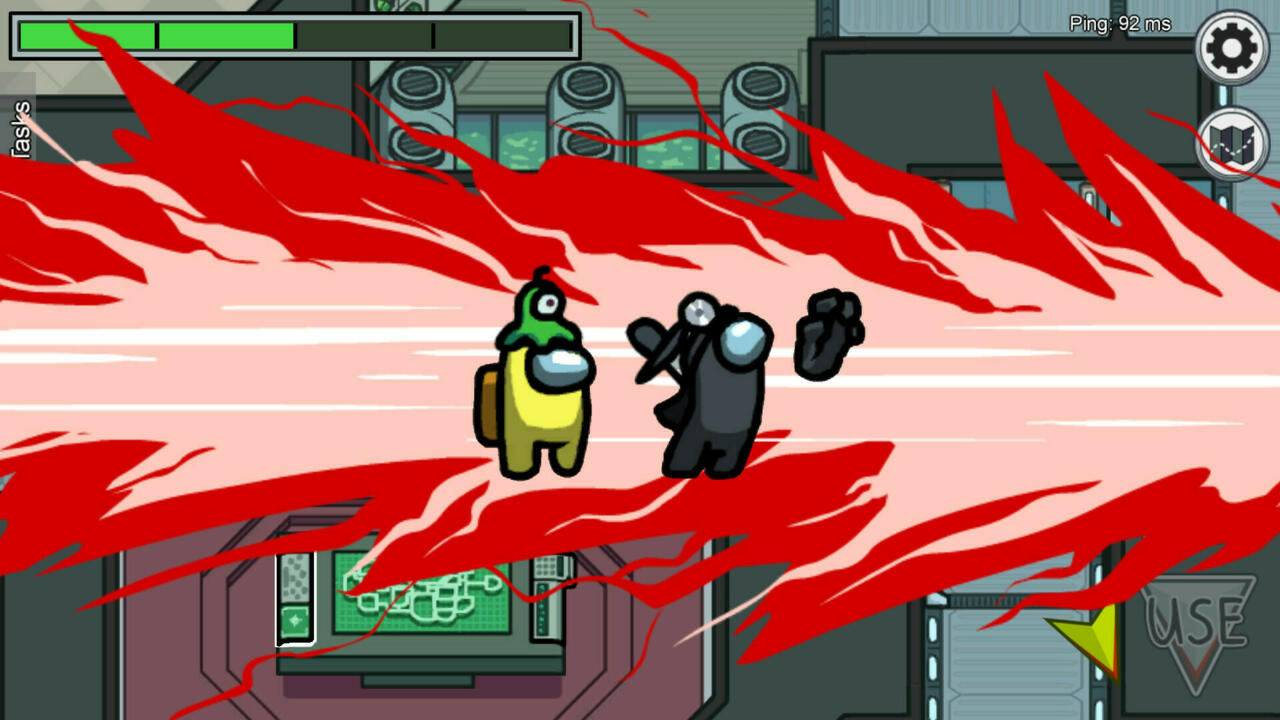
While you're certainly going to be one of the good guys during any given round, trying to desperately repair your spaceship and catch the imposter, it's those moments when you are the imposter and manage to pull off an epic murder and get away that prove to be its the most thrilling moments. Whether it be by venting away after a clean murder, then blaming someone you saw "acting sus" near electric, or by pulling off a stack kill and getting away with it, every moment feels extra rewarding. And when you hear everyone pinning the blame on--and ejecting--another hapless victim, the satisfaction inevitable brings on a devilish grin.
Among Us is my favorite indie game I've seen randomly blow up thanks to streamers, and I can't thank them enough for bringing a roaring community to this game. -- Dave Klein, Video Producer
Spider-Man: Miles Morales | Rio Morales Making Christmas Dinner
I had so many emotional moments with games in 2020. My favorite franchises hit all new heights that I did not expect, and to keep it a buck, I probably cried the most playing games this year. Persona 5 Royal, Yakuza: Like a Dragon, Final Fantasy XIV 5.3, and Final Fantasy VII Remake were all unforgettable and hit me right in my feelings--like, I'd lay down and stare at my ceiling to process my emotions for hours. It's probably also this lockdown that got me (and many of us) like this. But I wanted to highlight one that especially affected me on a more personal level and one that hits differently now that I know I can't go back home for the holidays.
Early on in Spider-Man: Miles Morales, Miles comes to terms with the fact that he's the only Spider-Man in town with Peter away on vacation and starts to uncover a new sinister plot. But before things ramp up, the game sets the mood to draw you into a cozy winter vibe. There's a moment where you do chores around the new Harlem apartment that he and his mom, Rio, just moved into. She's also cooking a big family dinner for the holidays since a few family friends are coming over.

As I walked through that scene, it simply reminded me of home and my mom. Rio is on the phone speaking Spanish while she's cooking, just like how my mom would talk all the chismis in Tagalog over the phone to my aunties like I didn't understand what she was saying! And some of the food you see on the counter closely resembles Filipino dishes I always had growing up--empanadas, arroz con gandules, pasteles wrapped that look like suman, and Rio frying platanos like my mom would use for turon. I think she even had pernil in the oven, which would be lechón for me. I could taste everything being cooked. It felt like I lived here before.
Through our collective histories, Filipinos and Latine folks of the diaspora share a sort of kinship. Spanish colonialism has shaped our language, culture, and food, and it's quite apparent for those of us in the United States, and something I always knew growing up in a largely Mexican community. Of course, in Rio Morales being Puerto Rican, it's a distinct culture that's being represented in Spider-Man: Miles Morales. But the parallels on display in this scene brought me back home immediately.
In the moment, playing through this part was a heartwarming feeling. Thinking back to it now, after talking to my mom and letting her know that plans to come back home for the holidays had to be cancelled, it's different. It made me realize how much I wanted to see her and my family again, to feel like a teenager again, excited for my mom's cooking and watching her put it all together like she's her own superhero. -- Michael Higham, Associate Editor
Final Fantasy 7 Remake | Modernizing Hell House
The original Final Fantasy 7 is my favorite game of all time, so when they finally announced they were remaking it, I was almost as skeptical as I was excited--almost. How would Square Enix handle the turn-based combat system? How would they make an entire game out of just the Midgar section? How would they tell an emotional story with grave undertones while keeping some of the originals more goofy moments like the Honeybee Inn or Snowboarding? While I knew I would enjoy it no matter how much they changed, I always figured it would inevitably end up falling to one side of the spectrum. Likely as a self-serious game that removes some of its more charming elements to appeal to the modern-RPG crowd--or lean even more into what made it goofy and alienate those looking for a more serious story. Somehow, Final Fantasy 7 Remake ended up treading the line perfectly, keeping step with what made the original so off-beat while also managing to improve upon the original's characters and hard-hitting emotional beats. On top of all that, I think this balancing act can be summarized by one scene in particular: the battle with Hell House.

If you played the original, I'm sure you remember rummaging around the slums and encountering the Hell House. It's a house that's an enemy. No, I'm not talking about mortgage payments; I mean a literal house that tried to kill you. On top of that, if you damaged it enough, it would sprout robot arms. So when it came to the remake, if there was one thing I figured they'd cut out, that would be it. But lo and behold, the Hell House ends up being the final boss of the Wall Market section of Chapter 9, and it's simultaneously silly and a dire threat all at once. I was overwhelmed by laughter, nostalgia, and the fear of death all at once. And just like that, every fear I had about the remake not meeting my absurdly high expectations were squashed. I knew that if they could make Hell House somehow contextually appropriate in the year 2020, I had nothing to worry about for the game's future parts--Final Fantasy 7 is still in good hands. -- Nicolas Sherman, Content Producer
The Last of Us Part II | The Seattle Hospital And The Encounter With The Rat King
Naughty Dog's sequel to The Last of Us was an incredibly profound and affecting game. Though it often left me feeling conflicted throughout its uncompromisingly bleak story, I still greatly admired the journey that its dual protagonists, Ellie and Abby, went on throughout the game. One of my favorite sections of the game took place during the second half, where you take on the role of Abby. Compared to Ellie's story, Abby's chapters take a more action-oriented approach, offering up some of the most intense encounters to be had in the game. While The Last of Us Part II and its predecessor doesn't quite have boss fights in the traditional sense, there was one encounter that truly fit the mold of a show-stopping, set-piece moment that forced you to use all the tricks you had learned throughout the game to topple an intimidating foe, and it ended up being one of my favorite moments of 2020.
In one of the game's many tense moments, Abby is tasked with descending into an abandoned Seattle hospital's lower levels in search of medical supplies. What makes this particular place noteworthy is that this location served as ground zero for the infection. What follows is a slow burn and incredibly unnerving trek into a tense environment that embraces atmospheric elements of survival-horror. The hospital exudes an ambiance and sense of dread that only grows as you do some light puzzle-solving and blast away infected monsters. Learning about the city's inevitable descent into chaos and how the failure to contain the infected in the hospital felt tragic, and reading notes left by long-dead residents only added to the sense of unease. While the hospital's openings areas focus more on environmental storytelling while playing into the sense of isolation, you are not alone in the building's lower levels.
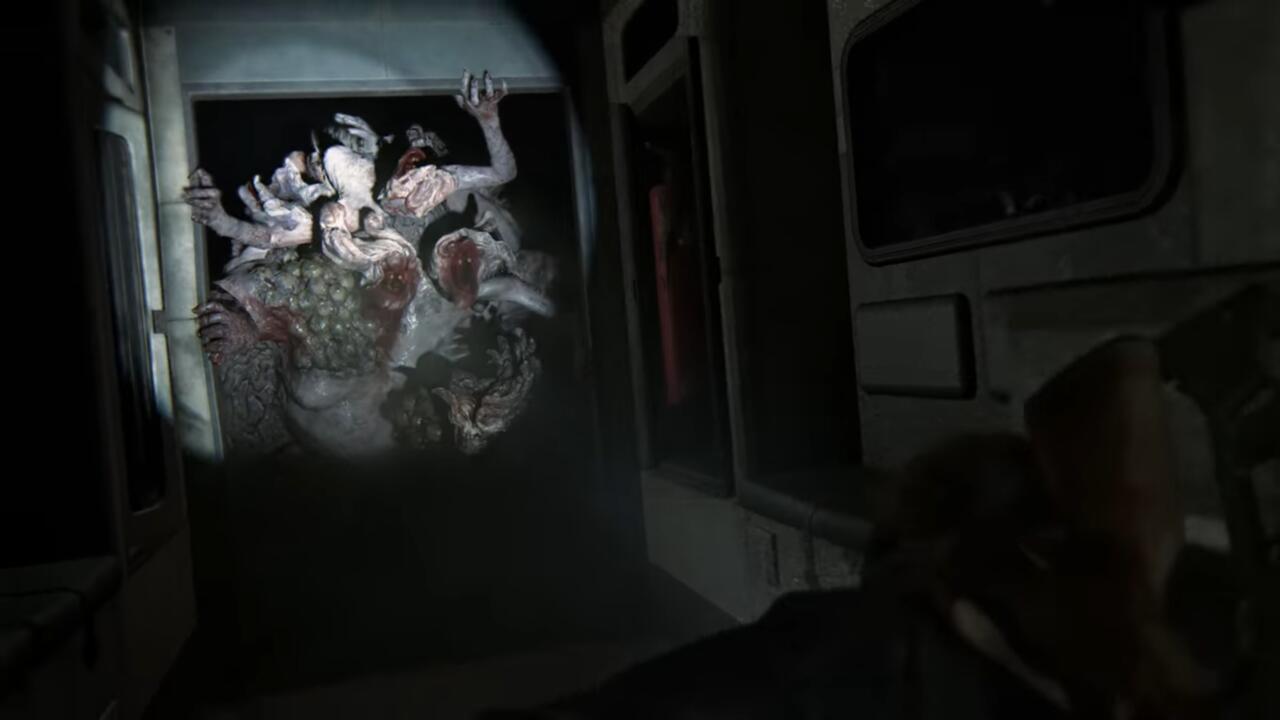
The Last of Us owes a great deal of debt to the Resident Evil series as an influence, and in many ways, the Seattle hospital felt like a tribute to Capcom's survival-horror franchise. I had a constant feeling that I didn't belong in this abandoned hospital, and the urge to leave as fast as possible only grew once I went further into the basement's trauma center. This sensation would be proven right with the most terrifying and horrific monster to ever show its ugly face(s) in the series--known only as The Rat King.
Made up of the old infected that somehow mutated into a single fused, hulking monster, the Rat King is a walking terror that caps off this trek into the hospital in a thrilling fashion. Named after the phenomena when several rats become tangled together by their tails, the massive infected monster seen in the game is a disturbing sight that's tough to look at, let alone fight. After the initial chase sequence, where you'll have to leap over hospital gurneys and squeeze through narrow doorways, the pursuit ends in a room where you need to pull out all stops to put it down. I cannot tell you enough how much of a rush this moment was in the game. While the majority of the game's plot and tone can be incredibly bleak and heartbreaking, this instance where it breaks into full-on action-horror felt invigorating and surprisingly earned. When I think back on high-points in the Last of Us Part II, this section of the game stands as a remarkable moment in an incredibly evocative game, and I won't forget what it was like exploring this place for the first time. -- Alessandro Fillari, Editor
Tony Hawk's Pro Skater 1 + 2 | Hearing "Superman"
Tony Hawk's Pro Skater 1 + 2 is one of the most successful remakes of all time, and part of the reason for this is its reverence of the source material. That includes the music, and no song is more iconic in the entire series than Goldfinger's "Superman." Vicarious Visions clearly recognized its importance, using it in pre-release marketing and even having it start when you boot up the game. Having those horns blast as you drop into the halfpipe on the famous Warehouse stage is just as entertaining now as it was in 1999.
What made the song so famous, to begin with? Was it the catchy melody or the frantic pace? Or was it that the cheery, carefree tone made it perfect for wasting hours in the skate park? It became Goldfinger's signature song because of the game, with the band saying it gained much more popularity on tours whenever it pulled it out in its setlist.
The nostalgia of hearing such a time capsule of a song also translates to the experience of playing Tony Hawk's Pro Skater 1 + 2. This game eschews industry trends in favor of pure and simple skating goodness--no microtransactions and unnecessary new mechanics. It's just an even better version of the game you already loved, and we don't have to pretend that it's super. It is. -- Gabe Gurwin, Associate SEO Editor

